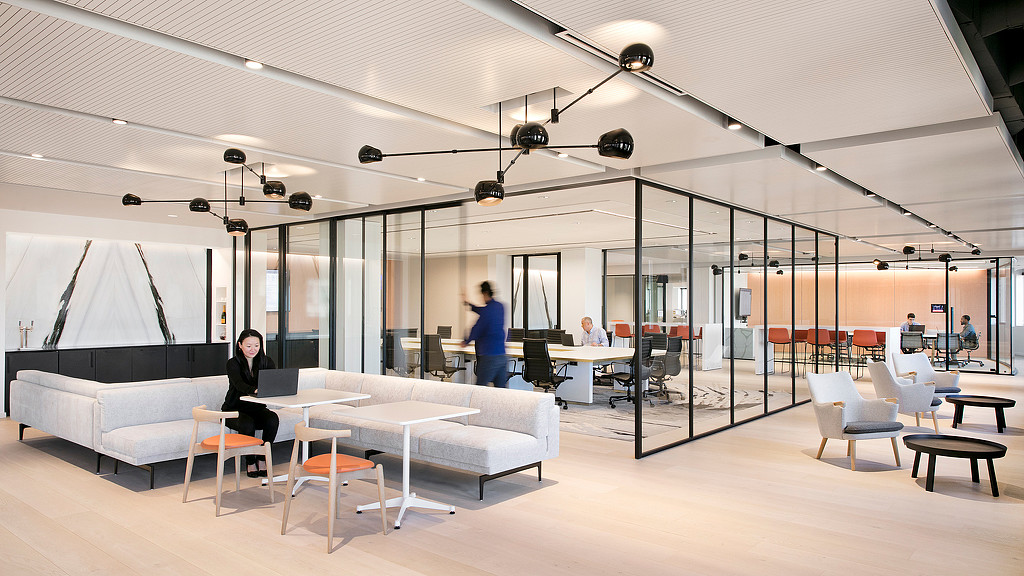5 Design Interventions to Mitigate Virus Risk in the Workplace
March 08, 2021 | By Janet Pogue McLaurin, Christine Barber, Daniel Pamperin
The Gensler Research Institute’s most recent Work From Home, City Pulse, and Global Workplace Surveys have revealed some surprising insights — and questions — about people’s perceptions about health and wellness and the future of the workplace. For this latest research, we collaborated with Michael Gao, M.D. of Haven Diagnostics and Assistant Professor (Courtesy) at Weill Cornell. Haven Diagnostics is a medical analytics company that helps employers quantify their infectious disease risk and plan a safe return to the office.
The Context
The year 2020 ushered in a new era for the economy and businesses, since it was the first time in more than a century that the harsh realities of a full scale, global pandemic revealed the serious impact that the spread of infectious disease has on our communities, our cities, and our workplaces. For office workers, many of whom could continue working from their home offices, the next step is to determine how and when they can return as safely as possible to the office. At the same time, companies are exploring what they can do to prepare for the return to work while minimizing the risks of disease transmission.
To help return to work safely and confidently and to reduce future operational risk, Gensler collaborated with Michael Gao, M.D. of Haven Diagnostics, to explore scenario-based design solutions that can help mitigate the risks associated with transmitting COVID-19, as well as protecting us from the spread of other infectious diseases, like the flu, or other pandemic-scale diseases that may arise in the future.
We explored four solutions ranging from a typical pre-pandemic open workplace, where people came to the office every day for mostly individual work, to a workplace designed for intense collaboration to support a mostly remote workforce. Each of these configurations are meant to be used in different ways.
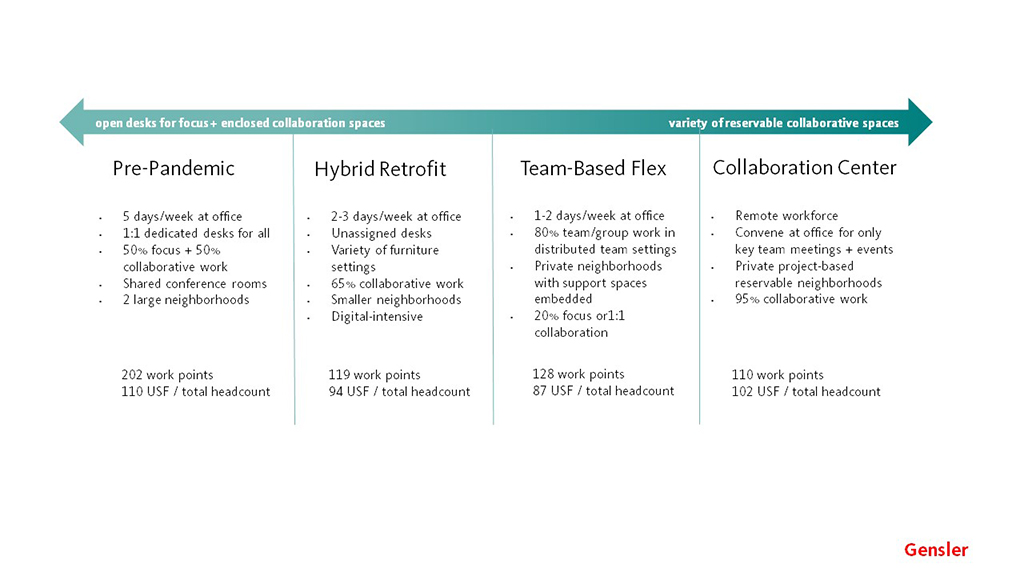
What We Did
Working with Haven Diagnostics, we simulated how each design impacts the spread of COVID-19 in the office environment.
To do so, we first created a virtual twin of the office and used agent-based modeling to mimic the movements and behaviors of employees in each layout. This allows us to understand how employees go about their workday and allows us to measure their interactions with both their colleagues and the environment across a variety of office tasks.
We then overlaid how COVID-19 virus is both added and subtracted to the environment: aerosol and droplet emission into the air through breathing and speech, as well as contact deposition on surfaces, and the removal of virus through natural decay, ventilation, filtration, and cleaning.
This, when combined with research on how the virus acts in a variety of conditions (e.g. the gradual decrease in droplets over various distances), allowed us to measure the “dose” of virus these virtual employees were exposed to and construct a probabilistic SEIR (Susceptible, Exposed, Infected, Recovered) model of COVID-19 transmission between individuals.
In summary, we were able to combine primary medical literature and expertise in office behaviors to map how differences in each environment impact risk.
The Results
Risk is not binary. Behavior changes risk, but office configuration and policy does as well. The goal was not to determine which single layout substantially outperformed the others, but to identify patterns, insights, and specific recommendations that could be applied to reduce risk:
- Limit the number of days in the office: Surprisingly, a day in the Hybrid Retrofit layout supporting a semi-remote population is only 1.5X more risky than a day in the Pre-Pandemic assigned seating layout, even though there is 2.5X more collaboration. The Team-Based Flex layout is only 1.9X as risky, even though there is 5X more collaboration than in the Pre-Pandemic layout. However, on a weekly basis, the Flex option risk is lower due to the expected days in the office.
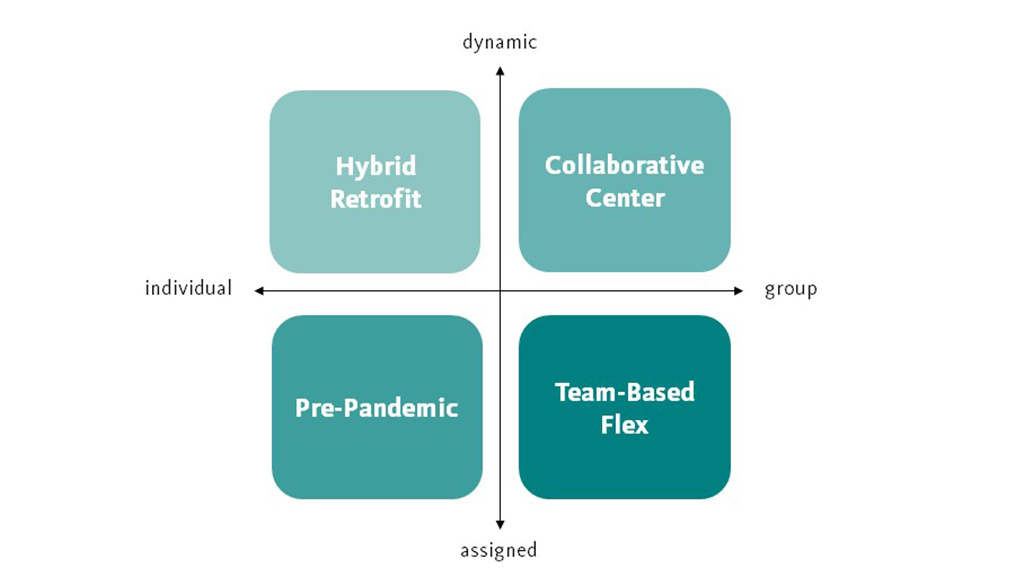
We found that increased collaboration does not necessarily equal increased risk. Decreasing the number of days in the office more than offset the increased collaboration time while in the in the office. This allowed each employee to reduce their individual risk in a way that’s perhaps similar to a pandemic “carbon credit” (although reducing your commute will literally reduce your carbon footprint as well).
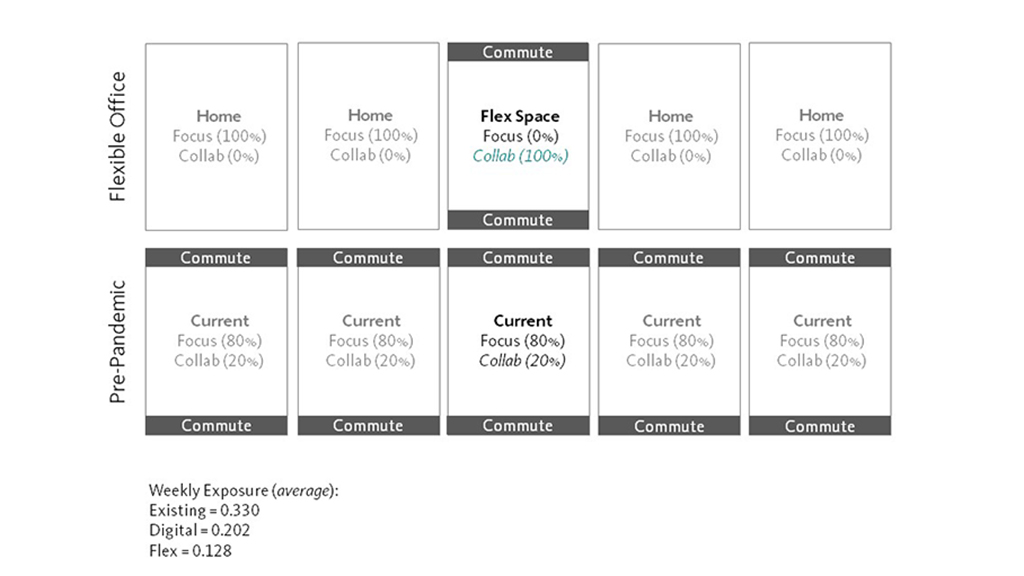
- Cross team spread: Individual behaviors, as well as team behaviors, play an important role in risk mitigation. Both intra-team and inter-team aerosol exposure were tested and measured in different layouts.
We found that independent teams pose less risk than highly networked teams. In this example, a floor where the occupants are highly networked required 86% of people to be infected or vaccinated before herd immunity was reached, whereas another floor with four teams that worked largely independently was able to reach herd immunity with only 53%.
Consider assigning specific resources, conference rooms, and collaboration spaces to specific teams and apply added preventative measures to collaboration between teams to reduce the cross contamination and lower risk.
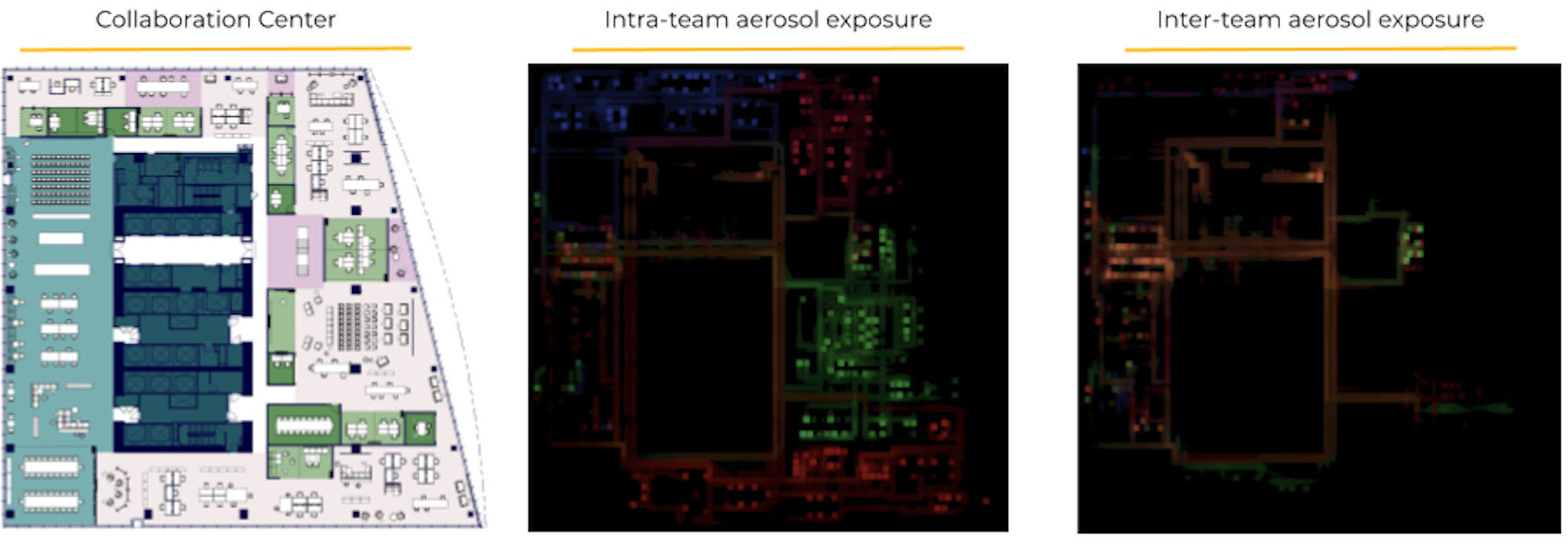
- Rethink circulation: One-way circulation is not always the best option as the benefit may be offset due of the longer path of travel and the longer period of exposure. Trailing behind someone for a long period of time is typically a greater risk than crossing within 6’ as you pass briefly. Providing multiple, non-overlapping entry points into work zones or neighborhoods to allow employees to walk to their work setting without walking by other work zones results in decreased exposure risk.
- Large conference rooms outperform mid-size conference rooms: When it comes to mitigating risk, it’s not about the number of people in the room, it’s about the activity. Large conference rooms are typically used for meetings where one person may be talking at a time giving status or updates in presentation style (and fewer people talking results in fewer aerosols and droplets generated). At other times, these rooms may not be used at capacity. By contrast, many mid-sized conference rooms for 5-6 people are typically designed for group collaboration and informal discussions where multiple conversations take place at once. More people talking results in more aerosols in the air and increased virus risk.
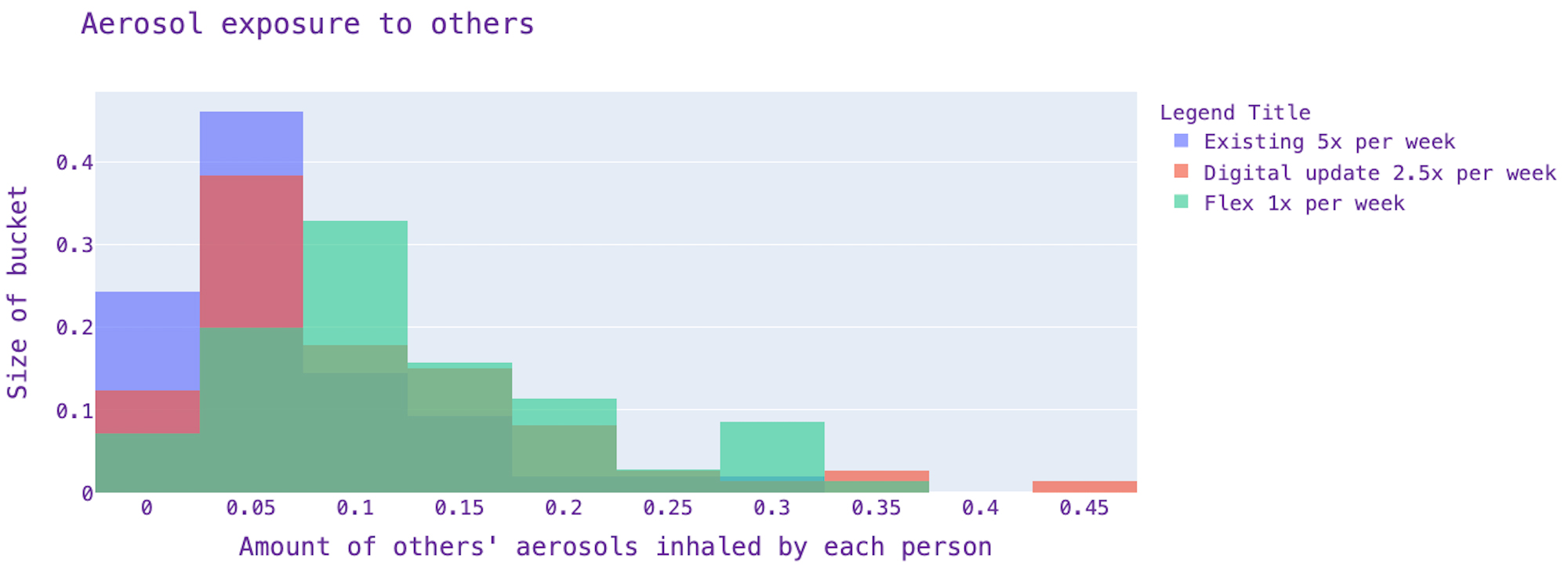
- Provide semi-enclosed collaboration areas: Partial walls and dividers that create barriers on two or three side collaboration zones have the benefit of feeling open and connected, yet private, but they also provide significant aerosol and droplet reduction, especially in areas away from traffic. In fact, the effective dispersion volume is more than 2X the dispersion volume of a similarly sized enclosed meeting room, preventing virus particle concentration from increasing rapidly. This is especially helpful when the collaboration space is appropriately distanced from other employees who may be working nearby.
What’s more, providing a variety of seating options not only increases choice, but can be an effective deterrent against aerosol and droplet movement in open plan areas. Soft dividers, booths, and other high furniture do not completely prevent spread, but can act as a barrier against direct air currents much the same way they deter audio transmission. Attention should be paid to the position and orientation of these “natural dividers” relative to the spatial relationship between teams and relative to supply and return vents.
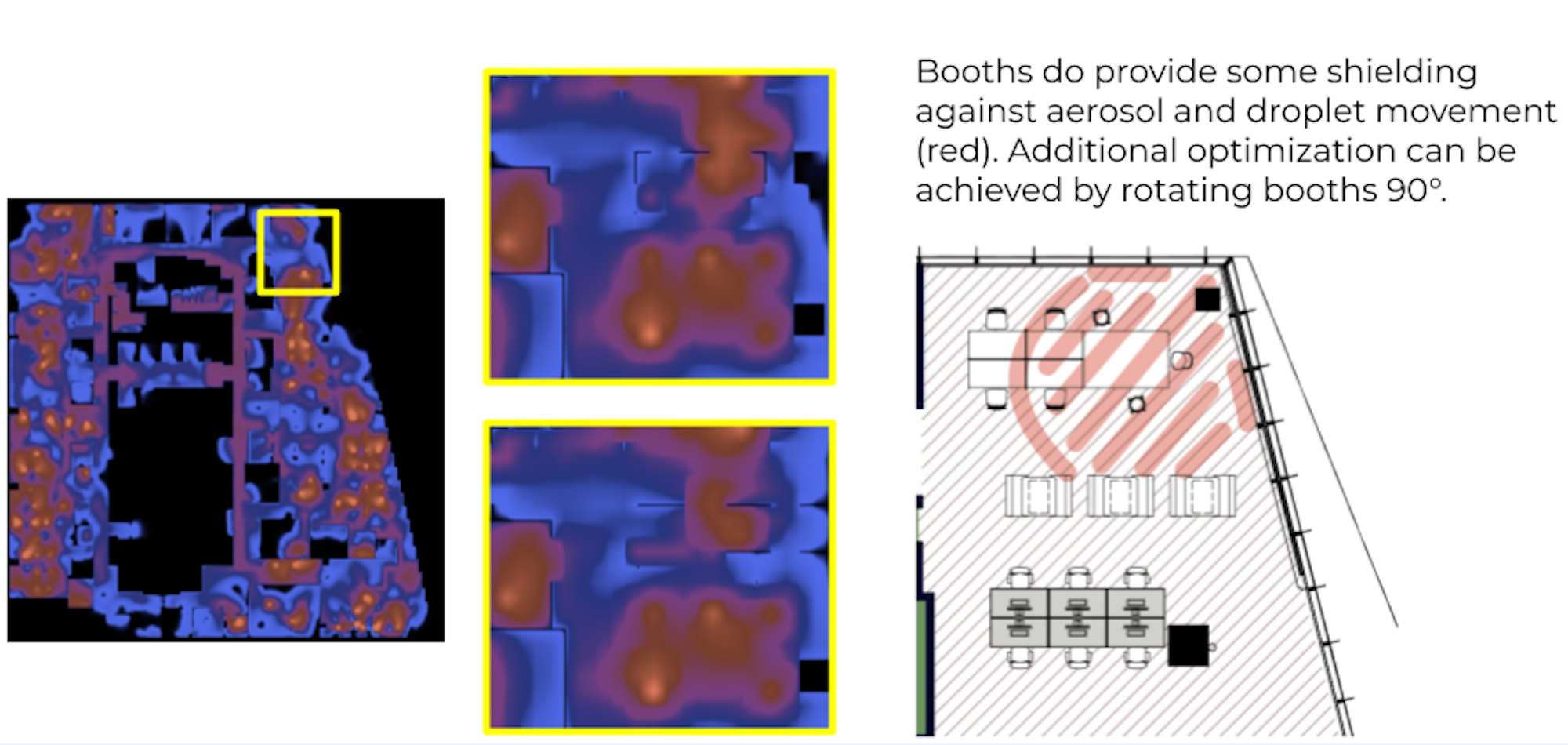
As people return to the office, they are doing so to meet specific business needs. Whether that is a space to connect with their team, collaborate, or focus there are ways to mitigate the risk associated through thoughtful policy or space interventions. None of these approaches fully prevents the spread of aerosol droplets, but through mitigation efforts we can lower the risk and better protect each other.
Haven Diagnostics Team: Michael Gao, M.D., Ben Siegel, Nathan Perilo
Gensler Team: Christine Barber, Janet Pogue McLaurin, Daniel Pamperin
For media inquiries, email .
